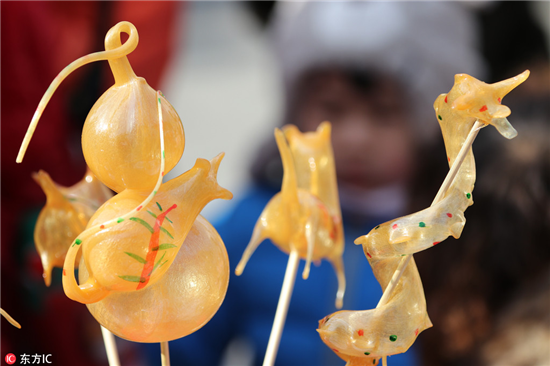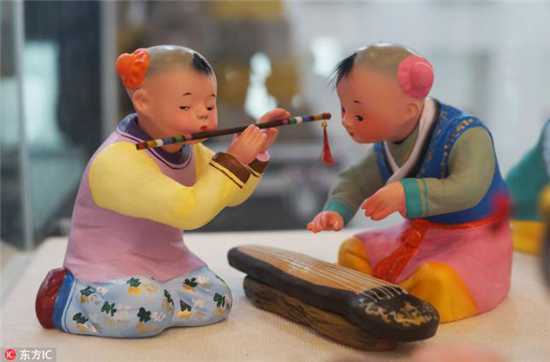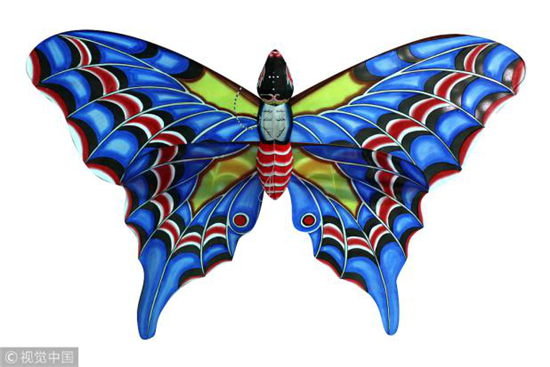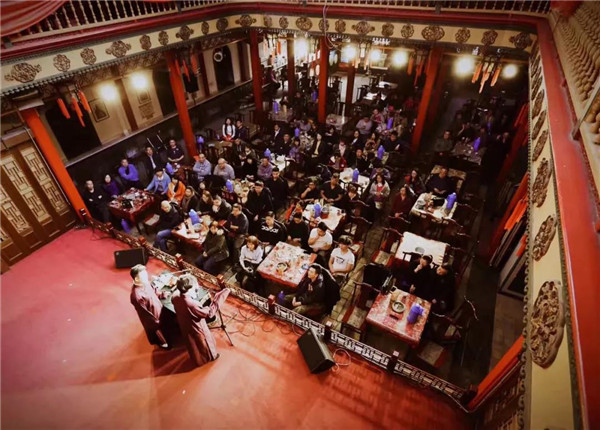Tianjin’s Traditional Local Arts

Sugar Figurine
As a folk toy, the sugar-figure boasts a long history. The sugar-figure is a type of food, but the meaning lies more in appreciation and making than eating. This art form showcases Tianjin's traditions and cultures, bearing fruits of the unique artwork. In the past years, the sugar-figure artists have made painstaking efforts from generation to generation. With time, the art itself also pursues further development and evolvement. Although nowadays the sugar-figure is taken mainly as a folk toy for appreciation, and withered in number, yet, it still possesses unique significance.

Painted Clay Figure Zhang
The painted Clay Figure Zhang is a kind of folk artwork from the Han dynasty that is deeply loved by the people. It has spanned a growth of 180 years,Vivid images and rich colors make it extremely popular.
The painted Clay Figure Zhang enjoys a wide range of themes from local customs, folk tales, stage theatres, to classical literature masterpieces like All Men Are Brothers, A Dream of Red Mansions and The Romance of the Three Kingdoms, etc.
With bright and graceful colors as well as high quality materials, the clay figures can endure a long time without desiccation or ruptures. It is usually displayed indoors, due to its small size (usually 40 cm in height).
The origin of the name, "Clay Figure Zhang", created in the late Qing Dynasty, is a folk painted art spreading in the North. Zhang Mingshan, the founder was born in Tianjin. On the basis of traditional clay figure art, he took in nutrition from neighboring arts like painting, traditional Chinese opera, folk Spring Festival woodcut pictures, etc.
He created more than 10,000 pieces of artworks in his lifetime. His unique art earned him household love from the common people who amiably nicknamed him "Clay Figure Zhang".

Kite Wei
Kite Wei is the kite made by Wei Yuantai, a renowned kite artist in Tianjin, thus called Kite Wei.
Wei Yuantai was an apprentice at a festoon shop since childhood, so he became deeply interested in kite-making. In order to improve the making of kites, he repeatedly studied the postures of flying birds and insects, and the proportions of their body parts, and applied them to the production of kites.
His kite could be separated and folded. He had developed nearly 200 types of kites, including flat, bowed, three-dimensional, string and pocket-size ones.
It is rich in national characteristics in coloring, and adopts the color-gradation technique used in the painting of ancient architectures and the contrasting tone of cold and warm, making it more suitable for high altitude flying. In 1914, he participated in the Panama International Exposition with his kites which won him a gold medal and certificate.

Opera and folk arts
Tianjin is one of the birthplaces of cultural arts in northern China and enjoys the reputation of “cradle of opera” and “city of folk arts”. Many forms of opera and folk arts were born, cultivated and developed in Tianjin. Among them, Tianjin Shidiao (tune), Tianjin Kuaiban (clapper talk), Jingyun Dagu etc. were born and formed in Tianjin. Xiangsheng (cross talk), Peking Opera, Pingju Opera, and Hebei Bangzi (clapper opera), etc., all have been cultivated and developed in Tianjin. Tianjin fostered hundreds of Xiangsheng artists represented by Ma Sanli, enabling it to become a universally acknowledged cradle of Xiangsheng artists. So far, Xiangsheng, Pingju Opera, Hebei Bangzi, Tianjin Shidiao, and Meihua Dagu have all been listed as items of national intangible cultural heritages.

Copyright ©
Tianjin Municipal Government. All rights reserved. Presented by China Daily.
京ICP备13028878号-35

